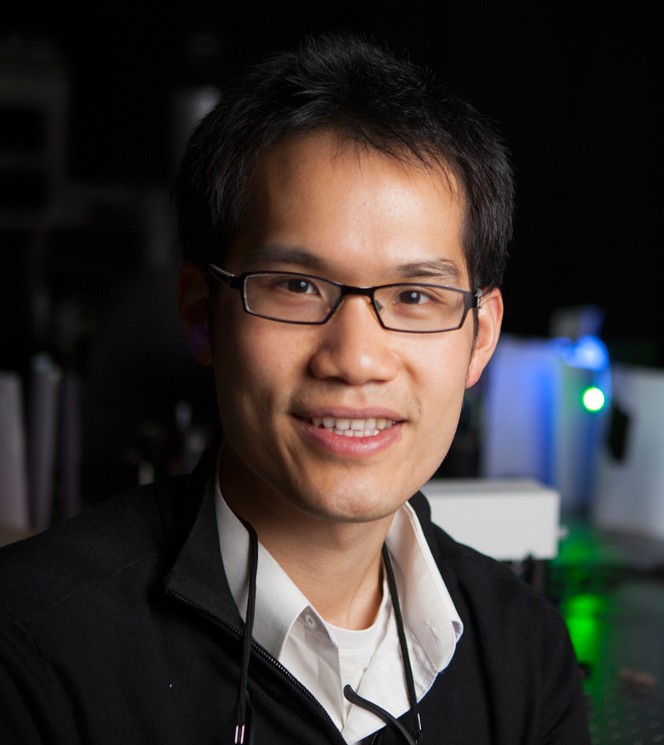Materials scientist Jin Suntivich to study fuel cells differently
By Syl Kacapyr
At the heart of every fuel cell is a catalyst that controls how the cell converts fuel into energy. The better the catalyst, the more efficient, powerful and cost-effective the fuel cell.
Transition-metal oxides are a class of high-performance catalysts with great potential, but the way in which they govern electrochemical reactions that turn fuel into energy remains poorly understood. Jin Suntivich, assistant professor of materials science and engineering, hopes to change that by studying catalysts in a new way, and he has been awarded $750,000 by the U.S. Department of Energy’s 2017 Early Career Research Program.
“There are many things going on when a transition-metal oxide is working as a catalyst, and that makes it difficult to study how a reaction fundamentally happens,” said Suntivich. His solution is to use a single-crystalline form of transition-metal oxides to gain an unprecedented look at the role defects, strain and subsurface laying of atoms play in how the catalyst performs. The simple structure will allow Suntivich to test each variable and record the performance to understand mechanisms and scientific principles that make for the best catalyst.
“Growing a single crystal is really, really hard. It’s one of the reasons why our work has not been carried out anywhere else,” said Suntivich, who plans to work with engineers who specialize in growing them at Cornell’s Platform for the Accelerated Realization, Analysis and Discovery of Interface Materials.
Once the catalysts are created, Suntivich will use a suite of characterizations to evaluate their performance and reaction mechanisms, focusing on finding the best atomic arrangements for converting carbon monoxide and oxygen into energy.
“To convert natural gas to electricity, one possibility is put it in a reformer that cracks the natural gas molecules and converts them to carbon monoxide and hydrogen,” said Suntivich, describing carbon monoxide as a gateway molecule to more complex ones.
Connecting a catalyst’s structural variables with its ability to produce energy will ultimately help scientists and engineers establish a design route toward future high-performing catalysts for fuel cells of all types. And Suntivich notes that the foundational knowledge will be valuable beyond fuel cells, as transition-metal oxides are used as coatings and catalysts for other reactions, such as for the manufacturing of plastics.
The Early Career Research Program supports the development of individual research programs of outstanding scientists early in their careers. Suntivich’s proposal, “Rational Selection of Transition-Metal Oxide Electrocatalysts From Structure-Electronic Structure-Activity Relations: The Role of Defects, Strain and Sub-Surface Layering,” was one of about 700 submitted this year for consideration, with the U.S. Department of Energy selecting 59.
Syl Kacapyr is public relations and content manager for the College of Engineering.
Media Contact
Get Cornell news delivered right to your inbox.
Subscribe